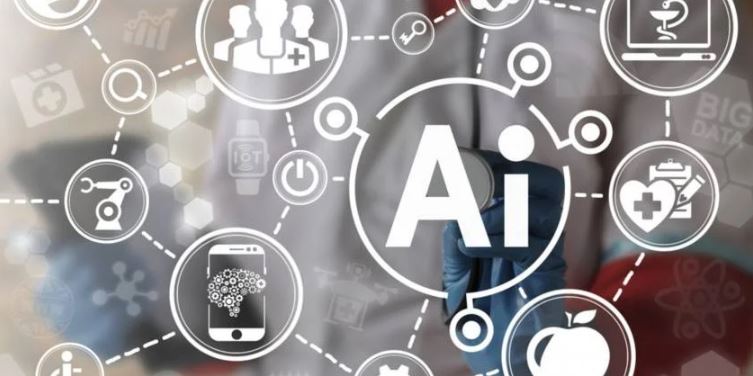
New Technology 2020 – Being in tune with the technological changes that impact the way people relate to brands and that can also positively influence business has become an increasing challenge for communication and marketing professionals. Every day, after all, there are changes happening in the technologies already established and new technologies also appearing. Thinking about it, from the study of trends and behavioral observation, here we are with 10 New Technology 2020.

Also Read : YouTube tests the “Products in this video” feature with links to purchases
Table of Contents
Latest New Technology 2020
1. Hyperautomation (RPA: Robotic Process Automation)
Hyper-automation is the combination of multiple machine learning tools, bundled software and automation to simplify work. According to Gartner, RPA has outperformed other segments of the corporate software market worldwide, with estimated revenue of $ 1.3 billion this year. With a proven path to generating value for the business, it is expected that even more companies will implement RPA initiatives in the coming months. In communication, automation is already part of different processes: from automation of e-mail rules to acceleration of the creative process of campaigns, with emphasis on the templatization of e-mails and assembly and editing of videos;
2. Artificial intelligence
Artificial Intelligence is not a trend in itself, but the third era of computing. She is part of a branch of computer science that deals with the simulation of behaviors through machine learning. Automation, agility, precision and, above all, prediction are some of the advantages of AI that will impact companies of any and all categories. According to the Gartner Group, 87% of organizations are looking for some level of personalization of their communication and it is precisely AI that will make it possible for digital and physical experiences to become hyperpersonalized, going far beyond analyzing clicks and browsing history. , starting to understand and predict how customers react or feel.
3. Consecration of the use of videos
The increase in the quality of connection, the increase in the supply of content and the multiplication of video formats on various social networks have led to an increasing bet on the use of videos. A study by Provokers indicated that the time spent by USA on online videos increased by 135% between 2014 and 2018. Aware of this scenario, many companies are beginning to bet on the format to engage customers and employees. Video technology will continue to simulate and improve communication, now with new features, such as virtual reality (VR) and other immersive technologies, especially when organizations work to fill talent gaps with remote teams;
4. Evolution in the use of immersive technologies
Augmented Reality, Virtual Reality, 360-degree video and holograms have been part of our cultural awareness for many years, but have not yet established themselves as indispensable and ubiquitous technologies. These technologies are very effective because they are based on experiential learning and because they largely involve multiple learning and performance centers in the brain, including cognitive, behavioral, emotional and experiential systems;
5. Cybersecurity
Consumers are increasingly aware that their personal information is valuable and requires control. Organizations recognize the growing risk of protecting and managing personal data, and governments have implemented strict laws to ensure that companies do this, such as the LGPD (General Data Protection Law), which is expected to go into effect by August. Transparency and traceability are critical elements to support these digital ethics and privacy needs. With adequate support from lawyers specialized in the subject, understanding the new legislation and integrating their technology, processes, communication and marketing teams with the changes that must occur in the way your brand relates to people will now be a sine qua non condition for any and all digital and CRM work;
6. Boosting the use of voice recognition
Until this year, half of all searches will be by voice, according to a ComScore survey. Alexa’s arrival from Amazon has further boosted and democratized this access. In this new voice-based world, it is necessary to understand what the consumer is looking for and think about content and services that actually solve some of their problems, inserting their brand in this new technology in a relevant and inclusive way and not in an interruptive and intrusive way. It is important to remember that speech recognition is not just about “talking to a smart speaker”, because voice interfaces are now everywhere, from smart appliances to interactive kiosks at the point of sale. Gradually, consumers will expect to speak more often than they type and this will affect all entertainment, media and technology companies;
7. Growth of podcasts
Although they have been around for some time, audio programs have become a great way to achieve organic reach. It is a format that allows you to offer something to people without necessarily asking for something “in return”. A podcast can add value and content, demonstrating a brand’s authority over its market. With the popularity of podcasts, audiobooks and other audio content growing alongside natural language processing and voice control, we will also see more audio games, interactive stories and other dynamic and responsive audio products and services entering the market;
8. Consecration of chatbots (and “brand avatars”)

Here there is a considerable renewal in the implementation of this technology. By the end of 2020, chatbots will account for 85% of customer service. They are excellent for solving practical issues, where human intervention is not necessary. Consumers will pay more attention to the brands that are incorporated through new characters and virtual avatars, allowing them to inhabit digital channels in a richer, immersive and human way. After all, they are already getting used to having meaningful relationships with entities powered by Artificial Intelligence, going, in addition to e-commerce, towards well-being, creativity and even the human need for company;
9. Facial recognition
According to a research report by market intelligence firm Component, the global facial recognition market is expected to grow from $ 3.9 billion in 2019 to $ 7 billion in 2024. We are surrounded by cameras, speakers and several other smart devices that monitor us in real time, all the time. These recognition systems use hundreds of different data points to identify, monitor and predict our next likely actions, both online and in the physical world. There is tremendous value in this whole discovery. After all, persistent recognition allows companies to learn more about consumers and provide them with a level of personalization that could not be achieved at scale in any other way;
10. Fusion of social media with e-commerce
Many brands still manage their social media and e-commerce strategies independently and in parallel, when, in reality, they should already be absolutely integrated and interdependent. In 2020, e-commerce and social media will definitely unite. The Instagram , for example, released in 2019, Instagram Checkout, which offers users the completion of their purchases within the platform. This prevents the customer from having to log into another website or application to complete their purchase.
Hope you like our article on 10 New Technology 2020 if you think we forgot something to mention let us know in comment box.
Also Read : Uber Reveals Flying Ride Service




One Reply to “Top 10 New Technology 2020”
Comments are closed.